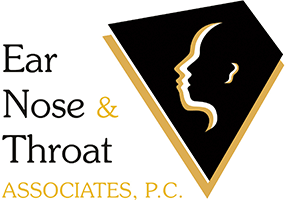Surgical Options for Sinus Problems
Our doctors are able to treat most sinus problems with medications and non-invasive procedures such as irrigations or nebulizers. When infections are not responsive to these treatments surgery to enlarge the openings that drain the sinuses into the nose may be helpful.
In the mid 20th century these procedures were invasive and often required entering through the cheek. This often resulted in persistent pain, scarring or sometimes disfigurement. Advances in surgical technology now allow more targeted and delicate surgery, typically through the nasal cavity, that allows for shorter recovery, less pain and better results.
What type of procedure is best for you?
While there are multiple different options out there for you, an exam and discussion with one of our doctors while help determine the best treatment for your symptoms. One method that helps us evaluate the severity of your sinus symptoms is a brief questionnaire called the SNOT-20 (Sino-Nasal Outcome Test).
Take the SNOT-20!
Functional Endoscopic Sinus Surgery (FESS)
In the early 1990’s the routine use of nasal endoscopes revolutionized sinus surgery. With improved visualization, surgeons are able to more precisely remove diseased tissue from areas that allow natural pathways to re-establish. The remaining diseased mucosa then has the opportunity to heal and return to normal function.
This type of surgery is performed entirely through the nose, leaving no external scars. There is typically little discomfort or swelling in the recovery phase. Surgery is usually done as an outpatient, allowing return to work in 5 to 10 days.
Image Guided Surgery
The sinuses lie close to the eyes and brain which are always areas of concern when performing sinus surgery. New technology allows three dimensional mapping of the surgical field using Computed Tomography (CT) scans. This technology allows real-time tracking of surgical instruments during complex sinus surgery. This allows for more precise surgery and often better results with fewer complications. This technology is similar to GPS technology and is often used in conjunction with FESS.
Balloon Sinuplasty
The most recent advances in sinus surgery have come from the use of balloon catheters. These balloons are similar to those used in angioplasties which open coronary arteries to avoid heart bypass surgery, and create the safe effect within the sinus cavities. In most cases, natural sinus passageways can be opened by this minimally invasive technique that preserves more of the normal sinus membranes and function.
Balloon Sinuplasty was FDA approved in 2006 and has established itself as a reliable technique with safety and effectiveness rates similar to FESS.
Learn more about the benefits of the Balloon Sinuplasty procedure performed in our Grand Blanc, Michigan office and contact us at (810) 694-0600 today for an appointment.
